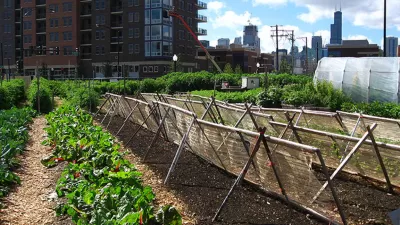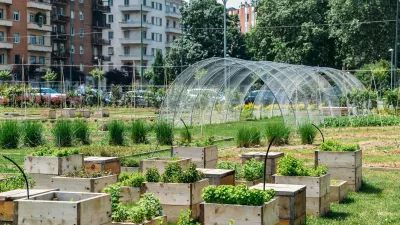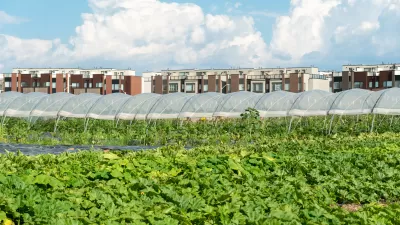Throwing cold water on the latest "techno-optimism" for indoor, urban agriculture.

Joe Cortright writes of his skepticism about urban farming—despite the popularity of "techno-optimistic stories about how a new era of hyper-local food grown in your neighborhood or very nearby." The latest example of which, and the inspiration for Cortright's response, is an article by Adele Peters for Fast Company: "Has This Silicon Valley Startup Finally Nailed the Indoor Farming Model?"
"While the story is replete with VC-pitch based talking points about the efficiency of some aspects of the indoor farming model–purportedly 1 percent as much water use as field crops, 30 miles to the consumer, not 3,000, plus [Plenty] uses LED lights are 64 times more cost-effective than those available a few years ago–one fact is conspicuously missing from the narrative," writes Cortright. That is: "How much will consumers be asked to pay for indoor-grown kale and basil?"
Cortright's concern is with the "dubious" economics of urban agriculture. According to his calculations, urban farming has to 100 times more efficient than conventional farming to cover the cost of land. Instead of a game changer of sustainability, Cortright predicts indoor farming will remain a niche technology for specialized, premium products.
FULL STORY: Dirt cheap.

Planetizen Federal Action Tracker
A weekly monitor of how Trump’s orders and actions are impacting planners and planning in America.

Map: Where Senate Republicans Want to Sell Your Public Lands
For public land advocates, the Senate Republicans’ proposal to sell millions of acres of public land in the West is “the biggest fight of their careers.”

Restaurant Patios Were a Pandemic Win — Why Were They so Hard to Keep?
Social distancing requirements and changes in travel patterns prompted cities to pilot new uses for street and sidewalk space. Then it got complicated.

California Homeless Arrests, Citations Spike After Ruling
An investigation reveals that anti-homeless actions increased up to 500% after Grants Pass v. Johnson — even in cities claiming no policy change.

Albuquerque Route 66 Motels Become Affordable Housing
A $4 million city fund is incentivizing developers to breathe new life into derelict midcentury motels.

DC Area County Eliminates Bus Fares
Montgomery County joins a growing trend of making transit free.
Urban Design for Planners 1: Software Tools
This six-course series explores essential urban design concepts using open source software and equips planners with the tools they need to participate fully in the urban design process.
Planning for Universal Design
Learn the tools for implementing Universal Design in planning regulations.
Heyer Gruel & Associates PA
JM Goldson LLC
Custer County Colorado
City of Camden Redevelopment Agency
City of Astoria
Transportation Research & Education Center (TREC) at Portland State University
Camden Redevelopment Agency
City of Claremont
Municipality of Princeton (NJ)





























